#Google shopping ads management services
Explore tagged Tumblr posts
Text
Digital Marketing Training in Mohali | Digihawks Marketing
Digi Hawks Marketing offers comprehensive digital marketing training in Mohali, designed to equip you with the latest skills and strategies in the industry. Our courses cover SEO, social media marketing, content creation, PPC, and more, providing hands-on experience with real-world projects. Whether you're a beginner or looking to advance your career, Digi Hawks Marketing ensures you gain the expertise needed to excel in the digital landscape. Join us to transform your digital marketing knowledge and career opportunities today!
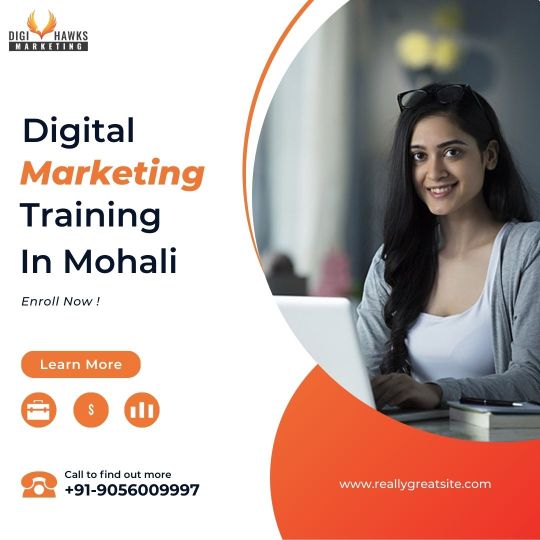
#digital marketing#facebook ads expert in india#ppc services in india#ecommerce marketing agency india#ppc#digital marketing training in mohali#ecommerce#ppc advertising agency india#Digihawks marketing#Google shopping management company#Ecommerce marketing agency india#PPC agencies in india#Facebook ads expert in india#Best ecommerce agency#Ecommerce agencies#Google shopping ads management services#PPC advertising agency#PPC service india#Dgital commerce agencies#PPC service in india#Commerce agencies#PPC advertising company india#digital marketing in mohali
0 notes
Text
Expert Google Ads Management Services for Google Shopping Ads
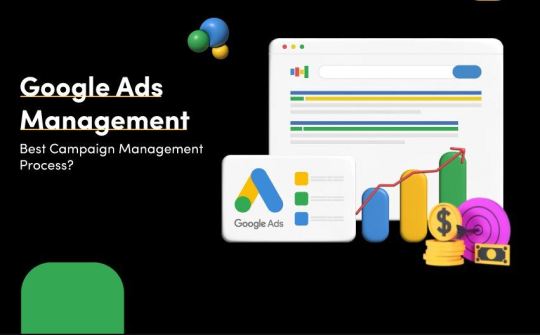
Looking to maximize your ROI with Google Ads? Our expert Google Ads Management services ensure your campaigns deliver optimal results, particularly with Google Shopping Ads. We tailor strategies to help your products stand out, drive targeted traffic, and boost conversions.
Boost visibility and sales with customized ad strategies.
Get optimized campaigns managed by certified professionals.
Leverage data-driven insights for better performance.
Partner with us to elevate your online advertising success and dominate your niche with precision-targeted Google Ads campaigns!
0 notes
Text
Enhancing Your Online Presence with Sustainable Mindz
At Sustainable Mindz, we are committed to revolutionizing your online presence through data-driven techniques. Our expertise lies in crafting campaigns that not only resonate with your audience but also enhance brand visibility and drive substantial conversions.
Targeted Campaigns Our team develops highly targeted campaigns tailored to your unique audience. By analyzing market trends and consumer behavior, we ensure that our strategies hit the mark, capturing the attention of potential customers.
Brand Visibility and Conversions We focus on boosting your brand’s visibility across digital platforms, ensuring that your message reaches a wider audience. Our goal is to convert this visibility into tangible results, driving increased traffic and sales for your business.
#creative design agency dubai#video animation company dubai#twitter marketing agency in dubai#creative design agency in dubai#lead generation agency in abu dhabi#video animation services in dubai#facebook management dubai#google display advertising dubai#display advertising agency in dubai#TikTok Ads Dubai#Twitter Ads Dubai#Best Twitter Advertising Agency in Dubai#Best LinkedIn Advertising Agency Dubai#Google Shopping Ads in Dubai#AdWords Agency UAE#Google Shopping Ads Agency in Dubai#remarketing dubai#Remarketing Ad Services Dubai#Best Facebook Advertising Dubai#Best Instagram Advertising Dubai#Display Ads UAE#Google Display Advertising Agency in Dubai#Motion Graphics Company In Dubai#Video Animation Services Dubai#Facebook Page Management Dubai#Core Web Vitals Google's Official Ranking Factor#Best LinkedIn Management Agency Dubai#performance marketing agency dubai#Dubai Flyer Design#Creative Flyer Design Agency in Dubai
0 notes
Text
Expert Google Shopping Ads Agency Services in London
Elevate your online sales with our expert Google Shopping Ads Agency Services in London. Our team designs targeted campaigns that showcase your products to a broad audience, driving traffic and boosting sales. We optimize your ads to appear when potential customers are searching for products like yours, ensuring high visibility and engagement.
#Google Shopping Ads Agency Services In London#Trusted PPC Agency in London#UK#PPC Agency In London#PPC Marketing Agencies in London#Google Shopping management services in London#Online Shopping Advertising Campaign London
0 notes
Text
Hi, I am a digital marketer and social media manager.
I know how to manage your business. If you want to promote your business please message me.
www.agencybd.net is our website, we are a team.
#management#small business#support small business#shop small#etsy shop#digital marketing#seo services#google ads#graphic design#security
0 notes
Text
Get in touch with Get More Traffic digital marketing agency on the Gold Coast if you are looking to get your Google Shopping Ads started.
Get More Traffic is a SEM agency that specializes in Google Shopping Ads. We can help you create and manage a successful Google Shopping Ads campaign that will help you reach more customers and grow your business. Here are some of the services we offer:
Campaign setup and optimization: We will work with you to create a Google Shopping Ads campaign that is tailored to your specific business and goals. We will also optimize your campaign on an ongoing basis to ensure that you are getting the most out of your investment.
Keyword research: We will conduct keyword research to identify the terms that your target customers are using to search for products like yours. This will help us to create targeted ads that are more likely to be seen by potential customers.
Ad copywriting: We will write compelling ad copy that will capture the attention of potential customers and encourage them to click through to your website.
Image optimization: We will optimize your product images so that they look their best in Google Shopping Ads. This will help to improve your click-through rate (CTR).
Reporting: We will provide you with detailed reports that track the performance of your Google Shopping Ads campaign. This will help you to see what is working well and what needs to be improved.
#Google Ads management services#Google Ads management agency#Google Ads management#Google Ads consultant#Get More Traffic#ecommerce#online shopping
0 notes
Note
question from someone who checked out from infinite a while ago; has 343 even added anything beyond cosmetics and forge assets in the past year? feels like anytime I see a new update it's just forge maps they're putting in the queue
as far as i know there's been like, little to nothing. Some "new" gamemodes but it's still just adding stuff from previous games. 3 years into its life cycle. The game is ostensibly on life support aside from the frequently (and loudly) updated cash shop. Like, when a game wants to be a live service, it should justify a cash shop via actual content drops. Helldivers 2 releases monthly mini battlepasses & still manages numerous free content drops each month. Plus, it's prices are not absolutely divorced from reality. Sure, Helldivers is also 40 dollars, but it was a complete game on release and Helldivers' cash shop respects the fact that i've paid 40 bucks already.
Like, here's a wonderful selection from Halo Infinite's cash shop during the flood event:

These are 20-22 dollar armor sets. Also, Halo Infinite is "Free to play" but the campaign alone is still 60 bucks. "Okay, so the campaign being separate from multiplayer means those 60 bucks means a much larger campaign, right? No, because of course it doesn't. Halo infinite's campaign is technically larger in the sense that it has wider areas, but with less enemy variety, a complete lack of dynamic set pieces, literally three types of environment, & kind of a shit sandbox compared to previous games, it feels MUCH smaller. So, I paid 60 bucks for Halo, and because Halo says anyone can play for free now, all the people who bought campaign are now also stuck with the free to play prices, which is terrible. Also, to reiterate: Why are there 20 dollar armor sets in a game. why do you get to pay 22 dollars to havbe the flood shit on you. these items are priced like the game gets actual updates. Halo infinite has not received a (fun) new weapon since launch. (They added the bandit, which is a scope-less DMR from previous halo games, then added the bandit EVO, which is a variant so boring that i refused to google the difference at the time of writing this.) Anyway, Helldivers 2 cash shop costs like 2-3 bucks for armor sets, some show up cheaper. And the currency you buy them with? Incredibly easy to earn.

sorry for doing my gaming rant. if you want we can call it an infodump & we can pretend i said all this on the lap of a cooing milf who is voluptious &cares deeply about how mad i am at video games
114 notes
·
View notes
Text
Fic Delivery Service!
So, AO3 is still down and looks like it might be down for a while (boo, leave the poor website alone, ya weirdos).
In the meantime, if you're desperate for a fic, I've got the following fics of mine available as PDFs. As an added bonus, I can send them to the email address of your choosing using the burner email account I used to make my Google Docs SMAU. In other words, if you fancy reading any of the following fics as a PDF, Stede Bonnet can send them to you! DM me if you'd like any!
Cool collaboration(s) you should read immediately:
Work Experience: what if Ed went to meet Stede when the Revenge ran aground? And what if Ed became a member of Stede’s crew? And what if things kept escalating and… Canon AU. Mature. Co-written with Shearwater.
Really no excuse for how stupid these ones are:
Watch Out, Here I Come: what if Stede had been intentionally seducing Ed? Teen
Once More, With Feeling: what if Frenchie just fixed the season 1 finale fiasco because he’s the most capable guy on the ship? Teen
Talent Show: what if Ed was crass about his sexual preferences? Explicit
Capsize on Your Thighs: what if Ed rebounded onto Calico Jack at the end of season 1? Ed/CJ and Ed/Stede (but Ed/Stede is endgame, natch). Explicit
Your Feedback is Important to Us: what if Stede started holding open cabin hours to allow the crew to air their grievances (but was also very repressed and horny over Ed)? Explicit
Oh no Ed’s working through gender/class stuff (but make it funny):
Finery: Ed gets to wear a dress, Stede spontaneously combusts. Explicit
Tell More Tales: Stede isn’t the only writer aboard the Revenge. Explicit
Lovers and Madmen: Ed is hellbent on marrying Stede. Explicit
AUs no-one asked for:
Conflict of Interest: lawyer!Stede/businessman!Ed (read: gangster). Modern AU. Explicit
Intergalactic Tango: Space Waltz AU. Mature
Trade Descriptions Act: bailiff!Ed/estate agent!Stede. Identity theft but make it meet cute. Modern AU. Teen
Baddy Zaddy: Bridget Jones’s Diary style, former porn star turned sex shop owner!Ed/still unfortunately landed gentry!Stede. Novel length modern AU. Explicit
Prize Every Time: You’ve Got Mail-y secret pen pals but also business rivals. Novel length modern AU. Explicit
Your Favourite Song: locksmith!Ed/museum curator!Stede. Kinktober fill that somehow isn’t E rated. Modern AU. Teen
Draft Letter to Restaurant Downstairs: Google Docs AU with a (slightly) interactive element. Modern AU. Teen
Blind Date: Stede and Jeffrey Fettering go on a blind date at Ed’s restaurant. I think you know where this is going. Modern AU. Explicit
Different Dimension: ficlet that crams four and a bit AUs into 850 words. Modern AU. Teen
Stuck Still: British holiday resort AU feat. events manager!Stede and bartender turned fairy!Ed (it makes sense in the story I swear). Modern AU. Explicit
On the Job: “kidnapping” meet cute (but not actually. Again, I swear it makes sense in the story). Modern AU. Teen
Starring Jason Statham: another weird meet cute, courtesy of Jack and the Fast and Furious franchise. Stede/Jack, Ed/Jack and Ed/Stede (Ed/Stede is once again end game). Modern AU. Teen
West Ham Is for Lovers: Lucius has a new job. It’s going fine. Completely, totally fine. A meet cute fic about meet cutes. Ed/Stede but also Lucius/Pete, Lucius/Fang, Lucius/Izzy and Lucius/Olu/Jim. Modern AU. Teen
Proud: Ed attends Pride to get free mum hugs, Stede attends Pride to give free dad hugs. Modern AU. Teen
Conventional: back in the 00s, Ed was in a very famous movie franchise. Nowadays, he does the convention circuit. Modern AU. Explicit
KrakenAir: Stede and the crew are heading to Benidorm to celebrate Stede coming out. That is, if Stede's all expenses spared KrakenAir flight ever departs. Modern AU. Teen
Oh no there’s been a containment breach (aka non-Blackbonnet fics):
We Do What We Like (and We Like What We Do): A brief history of Ed and Jack. Explicit (Ed/CJ)
Fealty: Stede and Izzy make one another even more miserable. Mature (Stede/Izzy)
Contra Proferentem: Ed is a high powered lawyer and Professor of Law at the University of Cambridge. Lucius is not a high powered lawyer but he is a lecturer of English Lit at the University of Cambridge. Stede own a very nice cafe. Explicit (platonic Ed/Lucius, Ed/Stede, no cheating involved)
29 notes
·
View notes
Text
“How ICT helped you at home, in school and in communicating with people”
In numerous aspects of daily life, including communication with others and at home and school, ICT (information and communication technology) is essential. ICT can be useful in the following ways in each of these areas:
1. At home Information Access: Information about interesting subjects is easier to obtain thanks to ICT. People may study items, read news, find recipes, and pick up new skills online. Entertainment: A variety of entertainment alternatives, such as streaming music and movies and playing online games, are made possible by ICT. Organization: ICT technologies that aid in time management and task, bill, and reminder organization include calendars, to-do list applications, and virtual assistants. Online Shopping: Time is saved and convenience is added when shopping and using services like groceries thanks to ICT.
ICT (Information and Communication Technology) plays a vital role in various aspects of daily life, from home and school to communication with others. Here’s how ICT can help in each of these areas: 2. In School Enhanced Learning: ICT tools like educational websites, digital textbooks, and interactive software enhance understanding. Platforms like Google Classroom, Zoom, and other learning management systems make it easy for teachers to share resources and engage students in virtual settings. Research: ICT provides access to a vast amount of online academic materials and resources, making it easier for students to complete assignments and projects. Collaboration: ICT fosters collaboration among students, enabling them to work together on projects using shared documents and online tools. Skill Development: Familiarity with ICT tools prepares students for technology-driven workplaces, giving them a competitive edge in their future careers.
3. In Communication Instant Connectivity: ICT tools like email, messaging apps, and video calls help people stay connected with family and friends, regardless of distance. Social Networking: Social media platforms allow people to build networks, share life events, and maintain connections with friends, family, and professional contacts. Work Communication: ICT enables remote working and collaboration through tools like Slack, Microsoft Teams, and Zoom, which is especially valuable for productivity and efficiency. Language Translation: ICT tools like Google Translate help people communicate across language barriers, making global communication more accessible.
2 notes
·
View notes
Text
I will setup facebook pixel google analytics 4 migration conversion API with GTM
Do you plan for Facebook pixel setup, conversion API, product catalogs, enhanced e-commerce tracking, or UTM? Google Tag Manager and Google Analytics 4. Ready to boost your business?
What is Facebook Pixel, UTM, Google Analytics 4, and GTM?.
The Facebook Pixel, UTM, Google Analytics, and tag manager are codes that are placed on your website, page, business page, and service related website. It collects and gathers data that converts your ads, optimizes ads, and builds targeted traffic and strong demographics for future ads.
What will I give for your business, service, and targeted audience?
Setup Facebook pixel.
Setup conversion API With GTM.
Conversion API Setup and integration.
Automatic shop catalog and optimization.

#facebookpixelsetup#facebookads#facebook#gtm#google analytics#conversion api#facebook marketing#facebook pages
13 notes
·
View notes
Text
Google Ads Help to Grow Your Buisness
Mastering Google Ads: A Comprehensive Guide
As a leading Digital Marketing Agency with extensive experience in Google Ads, we understand the immense potential this platform offers for businesses of all sizes. Whether you're a small startup or an established enterprise, leveraging Google Ads effectively can be the key to driving growth, increasing brand visibility, and maximizing ROI. In this article, we’ll guide you through the intricacies of Google Ads, from setting up your first campaign to advanced optimization techniques.
1. Introduction to Google Ads
Google Ads is a powerful online advertising platform that allows businesses to reach their target audience through a variety of ad formats. Whether your goal is to generate leads, increase sales, or build brand awareness, Google Ads provides a range of tools and strategies to achieve your objectives.
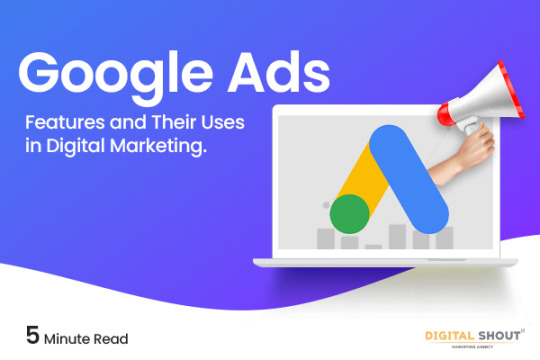
2. How Google Ads Works
The Pay-Per-Click (PPC) Model: Google Ads operates on a Pay-Per-Click (PPC) model, meaning you only pay when someone clicks on your ad. This model ensures that your advertising budget is spent on potential customers who are actively interested in your products or services.
Ad Auction Process: Every time a user performs a search, Google Ads runs an auction to determine which ads will appear and in what order. The ad rank is determined by a combination of your bid amount, the quality of your ad, and the expected impact of your ad extensions.
Ad Formats: Google Ads offers a variety of ad formats, including:
Search Ads: Text ads that appear on Google search results pages.
Display Ads: Visual ads that appear on websites within Google’s Display Network.
Video Ads: Ads that appear on YouTube and other video partners.
Shopping Ads: Product-based ads that appear in Google Shopping results.
3. Setting Up a Google Ads Campaign
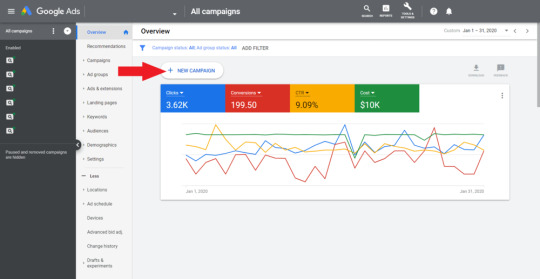
Creating an Account: To start using Google Ads, you need to create an account. This involves providing basic information about your business, such as your website and payment details. Once your account is set up, you can begin creating campaigns.
Choosing Campaign Objectives: Google Ads allows you to choose from several campaign objectives, such as Sales, Leads, or Website Traffic. Selecting the right objective is crucial, as it determines how your ads are optimized and where they appear.
Keyword Research and Selection: Effective keyword research is the foundation of a successful Google Ads campaign. Tools like Google’s Keyword Planner can help you identify relevant keywords that your potential customers are searching for. Selecting the right keywords ensures that your ads are shown to the right audience.
Ad Creation and Targeting: Writing compelling ad copy is essential for attracting clicks. Your ads should be clear, concise, and relevant to the user’s search intent. Google Ads also offers extensive targeting options, allowing you to reach your audience based on demographics, location, interests, and more.
Bidding Strategies: Google Ads provides various bidding strategies, including Manual CPC (Cost-Per-Click), Enhanced CPC, and Target CPA (Cost-Per-Acquisition). The choice of strategy depends on your campaign goals and budget. For example, Target CPA is ideal for campaigns focused on generating conversions.
4. Optimizing Google Ads Campaigns
Tracking and Measuring Performance: To assess the effectiveness of your Google Ads campaigns, it's crucial to set up conversion tracking. This allows you to measure actions taken by users after clicking on your ad, such as purchases or sign-ups. Key metrics to monitor include Click-Through Rate (CTR), Conversion Rate, and Quality Score.
A/B Testing: A/B testing, also known as split testing, involves running two or more variations of an ad to see which performs better. This can help you refine your ad copy, headlines, and calls-to-action to improve overall performance.
Budget Management: Effective budget management ensures that you maximize your ad spend without overspending. Google Ads allows you to set daily budgets and adjust them based on campaign performance. Allocating your budget to high-performing campaigns can lead to better results.
Continuous Optimization: Google Ads is not a “set it and forget it” platform. Regularly reviewing and optimizing your campaigns is essential for maintaining and improving performance. This might involve adjusting bids, refining keywords, or updating ad copy based on what’s working best.
5. Common Challenges and How to Overcome Them
High Competition and CPC: In competitive industries, the cost-per-click (CPC) can be high. To compete effectively, focus on improving your Quality Score by creating highly relevant ads and landing pages. Additionally, consider targeting long-tail keywords with less competition.
Ad Fatigue: Over time, users may become less responsive to your ads, a phenomenon known as ad fatigue. To combat this, regularly update your ad creatives and rotate different versions to keep your audience engaged.
Low Click-Through Rates (CTR): If your ads are not receiving enough clicks, it could indicate that they are not resonating with your audience. Improving your ad relevance, crafting stronger calls-to-action, and testing different headlines can help increase CTR.
Budget Management Issues: It’s easy to overspend on Google Ads if you’re not careful. Regularly monitoring your spend and adjusting your budgets based on performance is crucial. Focus on campaigns that deliver the best ROI and reduce spending on underperforming ones.
6. Advanced Google Ads Strategies
Remarketing: Remarketing allows you to target users who have previously visited your website but didn’t convert. By showing them tailored ads as they browse other websites, you can re-engage them and increase the likelihood of conversion.
Using Google Ads Extensions: Ad extensions provide additional information about your business, such as contact details, additional links, or promotional offers. Using extensions can improve your ad’s visibility and performance by making it more informative and appealing to users.
Automated Bidding and Smart Campaigns: Google’s automated bidding strategies use machine learning to optimize your bids in real-time, based on factors like user behavior and conversion history. Smart Campaigns are a fully automated option that can simplify campaign management, especially for small businesses.
Integration with Google Analytics: Linking your Google Ads account with Google Analytics provides deeper insights into user behavior on your website. This data can help you refine your campaigns and improve targeting by understanding how users interact with your site after clicking on your ads.
7. Case Studies and Success Stories
Examples of Successful Google Ads Campaigns: We've seen numerous success stories across various industries where Google Ads played a pivotal role in driving business growth. For instance, a client in the e-commerce sector achieved a 200% increase in online sales within six months by leveraging a combination of Search Ads and remarketing strategies.
What Can Be Learned from Failures: Not every campaign is a success, and there are valuable lessons to be learned from failures. Common pitfalls include poor keyword selection, lack of targeting, and inadequate budget management. Learning from these mistakes can help you avoid them in your future campaigns.So get attach with expertise of Imagency Media Ad Service
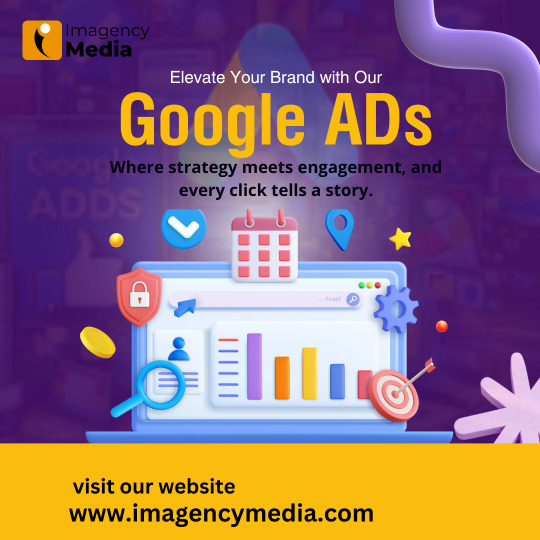
8. Future Trends in Google Ads
Automation and AI in Google Ads: The future of Google Ads is increasingly focused on automation and artificial intelligence. These technologies are enabling more precise targeting and bid optimization, allowing advertisers to achieve better results with less manual intervention.
Privacy Concerns and Regulations: As privacy regulations evolve, Google Ads is adapting by offering more privacy-focused solutions. This includes new ways to target users without relying on third-party cookies, ensuring that advertisers can continue to reach their audience while respecting user privacy.
9. Conclusion
Google Ads remains one of the most effective tools for driving online traffic and achieving business goals. By understanding how the platform works and continuously optimizing your campaigns, you can achieve significant results. As a trusted digital marketing agency, we are here to help you navigate the complexities of Google Ads and unlock its full potential for your business. Whether you're just starting or looking to optimize existing campaigns, our expertise can help you achieve your marketing objectives.
#digital marketing#digital services#google ads#search engine optimization#seo#social media marketing#branding#business
2 notes
·
View notes
Text
How to Sell Your Products Online
In the digital age, selling your products online is not just an option but a necessity for business success. The internet provides a vast marketplace, but standing out and making sales requires a strategic approach. Here’s a comprehensive guide to help you sell your products online effectively and attractively.
1. Define Your Target Audience
Understanding your target audience is crucial. Who are they? What are their preferences and pain points? Conduct market research to identify their demographics, interests, and buying behavior. This insight will shape your marketing strategy and product presentation, ensuring you connect with the right customers.
2. Choose the Right E-Commerce Platform
Selecting the right e-commerce platform is essential for your online sales success. Consider popular options like Shopify, WooCommerce, and BigCommerce. Look for features that match your business needs, such as customizable templates, payment gateways, and inventory management. A user-friendly interface and reliable customer support are also critical.
3. Create a Compelling Online Store
Your online store is your digital storefront, so make it visually appealing and user-friendly. Invest in a professional design that reflects your brand’s identity. High-quality product images, clear descriptions, and easy navigation will enhance the shopping experience and encourage purchases. Ensure your store is mobile-friendly, as many customers shop on their smartphones.
4. Optimize Product Listings
Effective product listings are key to attracting and converting buyers. Write clear, engaging product descriptions that highlight the benefits and features of your products. Use persuasive language and incorporate keywords that potential customers might use in their search queries. High-resolution images from multiple angles, along with videos if possible, can help customers make informed decisions.
5. Leverage Social Media Marketing
Social media platforms are powerful tools for reaching and engaging with your audience. Create and share content that resonates with your target market, including product showcases, behind-the-scenes looks, and customer testimonials. Use targeted ads to reach specific demographics and drive traffic to your online store. Platforms like Instagram, Facebook, and Pinterest can be particularly effective for visual products.
6. Implement SEO Strategies
Search Engine Optimization (SEO) helps improve your store’s visibility on search engines like Google. Optimize your website by using relevant keywords, creating high-quality content, and ensuring fast loading times. Implement on-page SEO techniques, such as meta tags and alt text for images, and build backlinks to boost your site’s authority and ranking.
7. Offer Excellent Customer Service
Providing exceptional customer service can set you apart from competitors and foster loyalty. Respond promptly to customer inquiries, offer multiple contact options, and provide clear information about shipping, returns, and exchanges. Positive reviews and testimonials can enhance your credibility and attract more buyers.
8. Utilize Email Marketing
Email marketing is a powerful tool for nurturing leads and driving sales. Build an email list by offering incentives like discounts or exclusive content. Send personalized emails to your subscribers, including product recommendations, promotions, and updates. Automated email campaigns can help you stay connected with your audience and encourage repeat purchases.
9. Monitor and Analyze Performance
Regularly monitor your online store’s performance using analytics tools. Track metrics such as website traffic, conversion rates, and average order value to gauge the effectiveness of your strategies. Analyze customer behavior to identify trends and areas for improvement. Use this data to make informed decisions and optimize your sales approach.
10. Adapt and Innovate
The online marketplace is constantly evolving, so staying adaptable is crucial. Keep an eye on industry trends, emerging technologies, and changing consumer preferences. Experiment with new marketing tactics, update your product offerings, and continually refine your strategies to stay competitive and meet your customers’ needs.
By following these steps, you’ll be well-equipped to successfully sell your products online. Focus on understanding your audience, optimizing your store, and delivering exceptional service to create a compelling and profitable online presence. Embrace the digital landscape, and watch your business thrive in the online marketplace.
2 notes
·
View notes
Text
Improve the Success of your Online Store with Reblate Solutions
Reblate Solutions partners with Shopify to provide top-notch e-commerce solutions that help businesses thrive online. Shopify's powerful platform combined with our expertise ensures that your online storeis optimized for success.
Here's how we can assist you with Shopify:
Shopify Store Setup and Customization
Starting an online store can be overwhelming, but Reblate Solutions makes it easy. We handle everything from setting up your Shopify store to customizing it to reflect your brand identity. Our design and development team creates visually appealing, user-friendly stores that enhance the shopping experience.
Theme Development and Customization
Choose from a wide range of Shopify themes or let us create a custom theme tailored to your business. Our developers ensure that your theme is not only aesthetically pleasing but also responsive and optimized for performance on all devices.
Product Management
Efficient product management is crucial for a successful e-commerce store. We assist with product listings, categorization, pricing, and inventory management. Our team ensures that your products are presented in the best possible way to attract and convert customers.
Shopify SEO
Improve your store’s visibility with our Shopify SEO services. We optimize product pages, implement effective keyword strategies, and ensure that your store is search-engine friendly. Our goal is to drive organic traffic to your store and increase your search rankings.
Payment Gateway Integration
We integrate secure and reliable payment gateways into your Shopify store, providing your customers with multiple payment options. From credit cards to digital wallets, we ensure a seamless and secure checkout process.
Shopify App Integration
Enhance the functionality of your Shopify store with the right apps. We help you select and integrate apps that streamline operations, improve customer experience, and boost sales. Whether it’s marketing tools, inventory management, or customer service apps, we’ve got you covered.
Shopify Marketing and Advertising
Boost your store’s reach with targeted marketing campaigns. We create and manage social media ads, Google Ads, and email marketing campaigns to attract and retain customers. Our data-driven approach ensures that your marketing budget is spent effectively.
Analytics and Reporting
Understand your store’s performance with our comprehensive analytics and reporting services. We provide insights into customer behavior, sales trends, and marketing effectiveness. Our reports help you make informed decisions to grow your business.
Customer Support
Provide exceptional customer service with our support solutions. We set up and manage customer service channels, ensuring that inquiries and issues are addressed promptly. Our focus is on building trust and maintaining customer satisfaction.
Shopify Compliance and Security
Ensure your store complies with industry standards and Shopify’s policies. We implement best practices for data security, privacy, and regulatory compliance, giving you peace of mind.
By leveraging the power of Shopify and the expertise of Reblate Solutions, your e-commerce business can achieve new heights. We provide tailored solutions that meet your unique needs, helping you build a successful online store that stands out in the competitive e-commerce landscape.
#e commerce sites#ecommerce website development#free shopping cart#ecommerce solutions#shopify store#Shopify Development#Shopify#Shopify Apps#reblate solutions
3 notes
·
View notes
Text
Importance of Digital Marketing for Small and Large Businesses
1. Cost-Effective
Once upon a time marketing been considered as luxury, because of its conventional nature. The cost for one billboard or distributing samples was high, commodity, not every business could go. Nonetheless, digital mediums have enabled all types of businesses with varied budgets or indeed not budgets, to request their brand on one steady platform.
Digital marketing sweats bear slightly any original investment. This is great for small businesses. Utmost digital marketing tools offer introductory features free of cost. It's over to the businesses to make the swish use of them.
2. High Reach
A simple rule of branding- go wherever your cult is. While understanding the significance of digital marketing, know that maturity of your cult is online. Hence, marketing online will increase your reach.
With digital marketing, the reach is global. Hence, you can take orders for your product or service from each over the world and it need not be limited to one area. And when you go global, you can still niche your cult to named individualities. Thus, it’s a win- win.
3. Brand awareness
Putting your brand out there on quest machines like Google, Bing, Yahoo, etc and social media platforms analogous as Instagram, Twitter, Quora, Facebook, etc will earn you an online character that the entire world can see.
Digital marketing helps you produce awareness of your brand and its USP( Unique Selling Proposition). If a customer has no awareness of your brand also he can't make a conversion. To attack this, brand visibility is extremely important. With pay- per- click and other kinds of paid elevations, you can really attract guests to your small business. We recommend this Facebook and Instagram Advertisements online course to understand some farther.
4. Erecting a customer Base
Another reason is that you can't keep a record for every person that walks in your shop or every customer who might not like your product. CRM and remarketing ways help make customer bases.
The challenge with small businesses is that one needs to make a customer base. This is predicated on erecting a fellowship with a strong customer relationship. With CRM tools analogous as Hub Spot and Oracle, you can manage this easily.
They need to retain being businesses and concentrate on brand character, client retention, and the growth of the business.
5. Brand Image
An established company’s image is everything. The right marketing strategies can have a profound impact on your company's brand image. Through digital marketing, effective campaigns can be designed and the compass of fixing any glitches directly is there.
Brand image is crucial for every brand and with digital marketing, you will know about both positive and negative reviews.
6. Measurable Results
With digital marketing, companies can have real time analytics regarding results, growth etc. With this, they can anatomize the effectiveness of the campaign and accordingly formulate strategies. Moment, the significance of assaying data is truly important to estimate the effectiveness and success of your campaigns.
The significance of digital marketing is majorly related to the fact that results and criteria are measurable.
7. Increase in ROI
With digital marketing, returns can be suddenly high if your campaigns are on the right track. Companies can increase their profit with digital media by investing in announcements and thus, adding metamorphoses.
The investment in digital media is important lower than in traditional media and the returns are also advanced. Did you know? You can run announcements on certain digital platforms for as low as 1$.
8. Retaining pious guests
The main thing of digital marketing for big businesses piecemeal from adding their business is icing that their customer base is pious and satisfied.
These are reasons enough to indicate that the significance of digital marketing for businesses is vital and thus, you must consider espousing it for your business. A smart and affect- predicated option would be to go for digital marketing marketable training.
2 notes
·
View notes
Text
Benefits of Google Ads
Google Ads allows you to take advantage of the benefits of online advertising: show your ads to the right people, in the right place, and at the right time. Google Ads offers several benefits, but here are the key ones:
1. Target your ads
Targeting gives you the ability to show your ads to reach people with specific interests — namely, people who are interested in your products and services — and show them relevant ads.
Google Ads offers different ways of targeting, which we'll go over in more detail later. For now, here's a look at the choices that you have with online ads that can make your marketing campaigns even more targeted:
• Keywords: Words or phrases relevant to your products and service, which are used to show your ads when customers search for those terms or visit relevant websites.
• Ad location: Show your ads on Google search results pages and websites that are part of the Google Search and Display Networks.
• Age, location, and language: Choose the age, geographic location, and language of your customers.
• Days, times, and frequency: Show your ads during certain hours or days of the week, and determine how often your ads appear.
• Devices: Your ads can appear on all types of devices, and you can fine-tune which devices your ads appear on and when.
2. Control your costs
Google Ads gives you control over how you spend your money. There’s no minimum. And you can choose how much you spend per month, per day, and per ad. You’ll only pay when someone clicks your ad.
3. Measure your success
With Google Ads, if someone clicked your ad, you’ll know. If they clicked your ad and then did something valuable to your business -- purchased your product, downloaded your app, or phoned in an order -- you can track that, too.
By seeing which ads get clicks and which ones don’t, you’ll also quickly see where to invest in your campaign. That, in turn, can boost the return on your investment.
You can get other valuable data, including how much it costs you, on average, for advertising that leads to your customers’ online purchases or phone calls.And you can also use analytical tools to learn about your customer’s shopping habits -- how long, for instance, they tend to research your product before they buy.
4. Manage your campaigns
Google Ads also offers you tools to easily manage and monitor accounts.
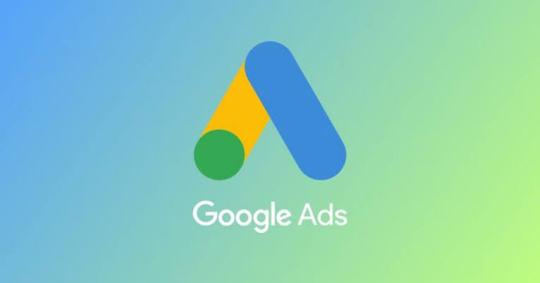
#google ads#google#googleranking#ranking#ranked#website ranking#seo services#advertising#tumblr ads#ads
2 notes
·
View notes
Text
Google Ads Unleashed: Your Ultimate Guide to Dominating Online Advertising
Hey there, savvy marketers and business enthusiasts it's your digital marketing agency in dwarka, vrankup! In this fast-paced digital universe, where attention spans are shorter than ever, cracking the code to successful online advertising is like finding the golden ticket. And guess what? Google Ads is your golden ticket! So, buckle up as we take you on a whirlwind tour of the Google Ads wonderland and show you how to conquer the online advertising game like a true boss.
**Google Ads in a Nutshell**
Picture this: Google Ads is like a magical marketplace where businesses can strut their stuff through ads displayed on Google's search results and a bunch of partner websites and apps. And guess what? You only pay when someone clicks on your ad – it's the "pay-per-click" groove.
**Why Google Ads Rocks Your World**
1. **Laser-Sharp Targeting:** Google Ads has this superpower that lets you aim your ads right at the bullseye. You can target peeps based on stuff like keywords, location, age, interests, and more. It's like hitting the jackpot of your ideal customers!
2. **Insta-Visibility:** Ever played hide and seek with organic SEO? Yeah, it can take ages to see results. But with Google Ads, you’re like the star of the show from the get-go. Once your campaign is a go, your ads start popping up on those search results like a pro.
3. **Budget Jedi:** Imagine having the force to control your spending. With Google Ads, you wield that power. Set your budget, whether it's daily or monthly, and avoid those budget blues.
4. **Results You Can Measure:** We're living in the era of data, folks. Google Ads gives you the goods – metrics like clicks, impressions, click-through rates, and conversions – all neatly laid out for you. It's like watching your business grow in real time.
5. **Ad Wonderland:** Get creative with your ads! You've got options galore – text ads, flashy display ads, engaging video ads, those cool shopping ads – make them pop and suit your brand's personality.
For better business services come to the best digital marketing agency in Noida
**Crafting Your Epic Google Ads Campaign**
1. **Unleash the Keyword Ninja:** Before you dive in, get your keyword game strong. Figure out the words your dream customers are typing in. These keywords? They're your golden tickets to ad stardom.
2. **Copy that Clicks:** Time to unleash your inner wordsmith. Write killer ad copy that speaks to your audience's soul. Tell them why your thingamajig is the bomb and what they'll miss if they don’t click. Oh, and don't forget that sizzling call to action!
3. **Landing Page Magic:** You’ve got them hooked, but where do they land? Your landing page! Make sure it's a seamless journey – relevant, persuasive, and in sync with your ad's vibes.
4. **Bullseye Targeting:** Google Ads gives you superpowers to target like a boss. Think location, demographics, and interests – aim for the stars, baby!
5. **Extensions FTW:** Imagine your ad as a superhero – now give it superpowers with ad extensions. Links, callouts, snippets – use them to make your ad stand out and be the talk of the town.
6. **Test, Tweak, Triumph:** Here’s the scoop – your first try might not be your best try. Test different ads, headlines, and strategies.
**Polish Your Armor: Monitoring and Optimization**
Hold on tight, this ride's not over yet! After launching your campaign, you're in for some hands-on action:
- **No-Nos with Negative Keywords:** Stop the madness of irrelevant searches by setting negative keywords. No more wasting precious clicks on those who ain't interested!
- **Bidding Battle:** It's like a bidding war, but way cooler. Manage your bids based on which keywords are rocking the charts. Put more power into the winners and watch the magic happen.
- **Quality Score Quest:** Google's got a thing called a quality score. It's like their way of giving you a high-five. The better your ad matches user intent, the lower your costs and the higher your ad ranks. That’s a win-win.
**In the Grand Finale**
So, fellow adventurers, you’ve ventured through the Google Ads wonderland. You've got the tools, the know-how, and the confidence to rock the online advertising scene like a pro. Remember, this digital realm never sits still. Keep your ears to the ground for the latest trends and updates. Now, go forth and conquer those clicks, because you, my friend, are the ruler of the Google Ads kingdom! 🚀👑
Catch you later,
digital marketing agency in dwarka, vrankup
#vrankup#website designing company in dwarka#seo company#seo#website designing company in gurgaon#digital marketing#website designing services in gurgaon#noida#digital marketing company in dwarka#digital marketing agency in dwarka
2 notes
·
View notes
